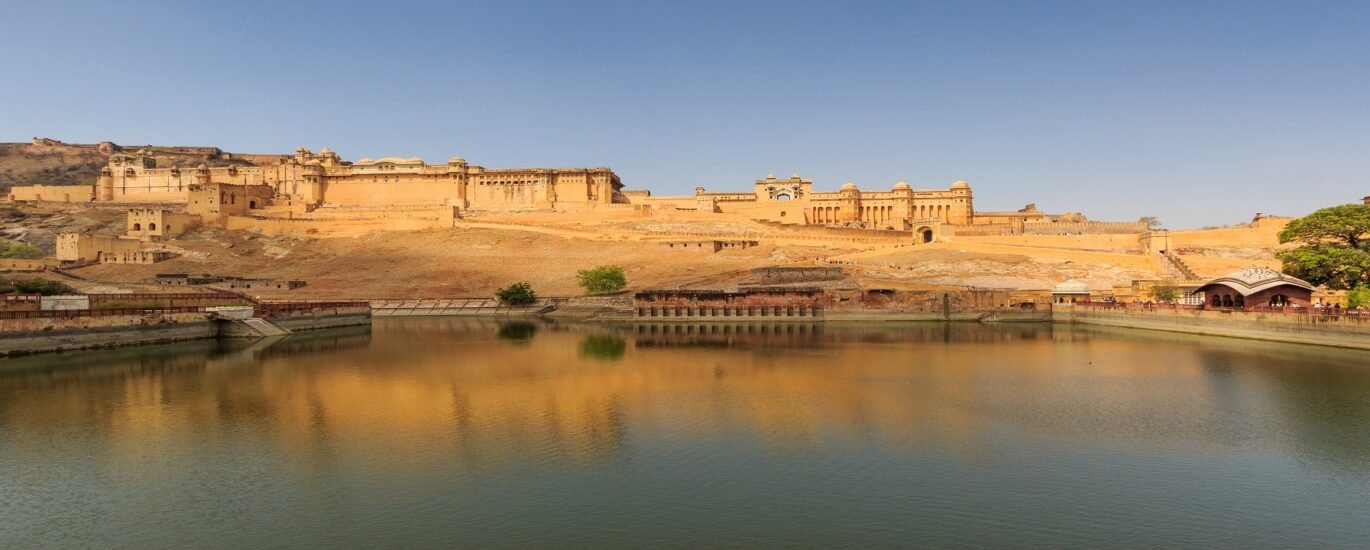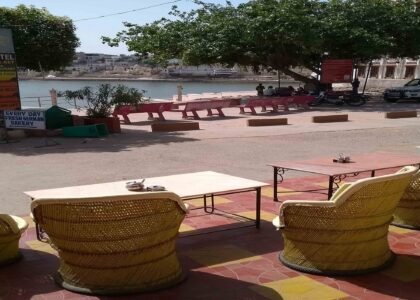The Hilltop forts of Rajasthan offer visitors an entrancing journey back in time and provide the chance to discover its rich history. Ranging from ancient palaces and stunning temples, each structure showcases stunning designs and decor that will leave visitors speechless. Some forts feature water harvesting structures as part of their defense strategy; today these structures remain operational and offer an exciting addition to your trip!
Chittorgarh Fort Chittor
Chittorgarh Fort in Rajasthan is an exquisite hilltop fort recognized by UNESCO as World Heritage. One of six hilltop forts located throughout India, other hilltop forts include Kumbhalgarh Fort near Jhalawar, Ranthambore Fort near Sawai Madhopur, Gagron Fort near Jodhpur and Amer Fort near Jaipur.
Chittorgarh Fort is an impressive monument built in the shape of a fish and covers 700 acres. It is comprised of palaces, temples and water bodies built by Rana Ratan Singh, Rawal Ratan Singh and Padmini; their palaces being among its most noteworthy structures.
Chittorgarh Fort boasts several iconic palaces, such as Vijay Stambh, Kirti Stambh, Suraj Pol and Bhairon Pol. Rani Padmini committed self-immolation at Suraj Pol in 1303. The palace nearby Suraj Pol is where Rani Padmini committed jauhar (self-immolation). Akbar attacked and captured Chittorgarh Fort in 1535. A number of Rajput rulers bravely fought off Muslim troops while many women at Chittorgarh Fort also engaged in acts of jauhar to help repel Akbar’s assault.
Fort Sagauld was initially strong against Mughals attacks but ultimately fell under their rule and it was later recaptured under Udai Singh’s control. Chittorgarh Fort has long been associated with an unforgettable tale: that of Padmavati, a Rajput queen captured by Alauddin Khilji and shown to the Sultan using mirrors as proof of her beauty. So impressed was Alauddin Khilji that he offered Padmavati freedom as long as she joined his harem. Book Rajasthan Tour Packages
Padmavati’s mother, Meera Bai was an ardent devotee of Lord Krishna and one of the most prolific poets within the Bhakti movement. Over her lifetime she composed between 200-1300 bhajans; additionally she was also an accomplished singer and talented dancer.
Jaisalmer Fort Jaisalmer – One of the top Hilltop Forts of Rajasthan
Rajasthan is famous for its breathtaking hilltop forts of Rajasthan, including Jaisalmer Fort – which is recognized by UNESCO and one of only several living forts still standing today. Fort Jaisalmer stands in the desert town of Jaisalmer and features yellow sandstone walls that become golden when the sun rises. Boasting 99 bastions, it serves as one of the major attractions in Jaisalmer.
Built by Rajput King Rawal Jaisal in 1156, this fort crowns the Trikuta Hill. Comprised of massive structures connected by narrow lanes and four gateways, its massive construction stands out against its surroundings. It comprises 99 bastions connected by an impressive 30-foot crenellated wall and features a royal courtyard decorated with beautiful palaces.
Forts often boast temples, homes and stables carved out of yellow sandstone that have intricately detailed designs, becoming museums. These structures boast intricately crafted architecture. Visitors to the fort can explore it either on foot or with auto rickshaws, and there are both government and private cabs available if necessary. Book Maharajas Express
There are various restaurants and eateries within the fort that serve delectable cuisine, while there are also shops selling some of the most interesting souvenirs and antiques. One popular pastime here is listening to local musicians play their folk instruments such as Sarangi, Rawanhatha, Kamayacha and Morchang. Many generations of local musicians have played these instruments with timeless quality; the music created from this heritage.
Fort Abu is situated near the edge of Thar Desert and was once an essential trading centre. Merchants would bring spices from all across India as well as tea from China over large caravans of camels.
Kumbhalgarh Fort Kumbhalgarh
Kumbhalgarh Fort stands on the western Aravali hills just a short distance away from Udaipur in Rajasthan, India. Built by Rana Kumbha of Mewar Kingdom during 15th century. Fort Russel stands inside an immense 36 km-long wall. Due to the hostile environment surrounding it, no attempt was ever made at conquering it.
At 1100m above sea level, this fort offers breathtaking views to behold and enjoy. A must-visit destination in Rajasthan! Kumbhalgarh offers the perfect place for travelers seeking peace and serenity away from the masses of tourists. Explore its rich history while admiring its architectural marvels on a tour of Kumbhalgarh fort.
Badal Mahal can also be found at the top of Kumbhalgarh fort and offers stunning combinations of green, white and turquoise colors – known for its grand rooms that stand out against its gray fortress counterpart. Once you arrive at the fort, a local guide named Salim Khan will welcome and show you around its formidable wall. He will explain its construction process as well as its significance to Kumbhalgarh history.
On your tour of the fort, take in breathtaking views from Aravali mountain peaks, or stroll through Kumbhalgarh forest – an internationally recognized wildlife park. Kumbhalgarh is well known for its fort, as well as for the ancient Jain temples located here, which boast beautiful carvings and intricate designs.
Amer Fort Jaipur
Amer Fort is one of India’s most beautiful and magnificent Hilltop Forts of Rajasthan, standing proud on an Aravali hilltop. A must see when visiting Jaipur. This UNESCO world heritage site was constructed in 967 AD by Raja Alan Singh of the Chanda Dynasty and later under Kachhwaha Rajput rule until 1727 when it was moved to Jaipur for relocation. Book Jaipur Tour Packages
Amer Fort is an iconic fortress encased by large ramparts and cobbled pathways, and overlooking Maota Lake it serves as one of the main tourist spots in Jaipur. The palace complex is composed of four courtyards. The front courtyard boasts the Diwan-e-Am, or public audience hall, which features latticed galleries and double rows of columns with capitals designed in the shape of elephants.
Inside the fort lies Man Singh Palace and Kesar Kyari Garden; these provide spectacular vantage points to enjoy sunrise and sunset views. At Amer Fort, you can experience an exciting light and sound show to enhance your experience of this ancient fort and learn more about its history, architecture, and local traditions.
If you are planning a guided tour of Amer Fort, make sure your guide has valid ID to protect against scammers. Hire your guide from Jaleb Chowk ticket counter. Amer Fort boasts another highlight – Sheesh Mahal. Adorned with concave mirrors and used for celebrations and victory parades, it is now often used for Bollywood shoots.
Amer Fort was constructed over two centuries, beginning with Raja Bharmal starting work on it in 1558 and concluding by Raja Sawai Jai Singh II completing it in 1727. Made of red marble stone, modifications were often made as per each ruler’s preferences throughout its lifespan.
Ranthambore Fort Ranthambhore
Ranthambhore Fort is a UNESCO World Heritage site and one of the top Hilltop Forts of Rajasthan, known for its spectacular architecture, fortifications, and fascinating history. Additionally, this impressive structure houses several Hindu temples as well as historical monuments. Ranthambore Fort lies within the Thambore range of mountains and overlooks Ranthambore National Park. Surrounded by thick walls with towers and bastions, this structure commands stunning views across Ranthambore.
Attractions to consider at this park include its rich heritage and wildlife; including tigers, elephants, deer and birds that call this home. Furthermore, this is one of the premier spots for tiger safari in India. Fort Chauhan was built during Prithviraj Chauhan’s 12th-century reign under Sultan Iltutmish of Ghurids and Salve dynasty Salve dynasty Salve dynasty Sultan Iltutmish’s attack, but quickly recaptured by Chauhans in 1236.
Jalal ud din Khilji attempted to take control of Fort Hammiradeva but failed. At that time, rebel general Muhammad Shah sought refuge with Hammiradeva and she refused to turn him over to Khilji who eventually defeated her in 1299. Today, Ranthambore Fort serves as a museum that exhibits its rich past and artifacts. It also houses several historic and architectural landmarks like Badal Mahal and Hammir Court that stand testament to this incredible place’s past glory.
An educational tour around a fort can provide you with invaluable insight into its history while giving you the chance to admire its impressive fortifications and gateways. Navlakha Fort can be reached through seven gateways known as pols; these include the Navlakha Pol, Hathi Pol, Ganesh Pol, Andheri Pol, Delhi Pol, Sat Pol and Suraj Pol gates with their own distinct dimensions and architecture.






